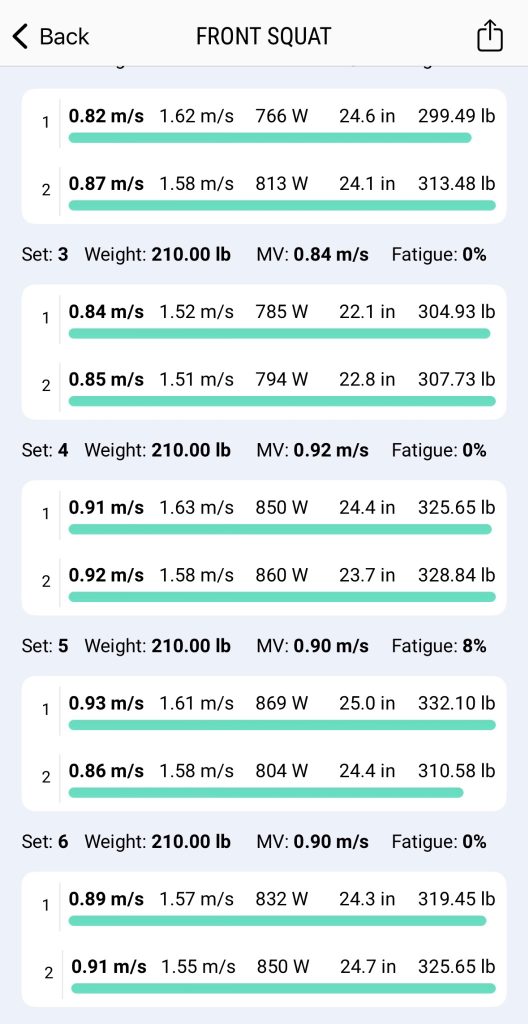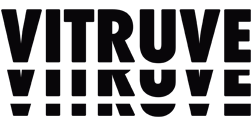31 de July de 2024
Using Vitruve to Aid Heavy Resistance Training
If you are reading this, I always make the assumption that you are either an avid lifter, athlete or performance coach. With that in mind, I want to talk to you about a subject that is very near and dear to my heart and might be to you as well! There could be a number of reasons you want to get stronger or increase the loads you can move with the various barbell lifts you use in your training. It could be because you compete in powerlifting. It could just be driven by your competitive nature in your training. It could also be (this is the case for the athletes I train) that improvements in these numbers will drive improvement in jumping and sprinting height and speed, respectively. As such, it drives me CRAZY when I see athletes or lifters aimlessly lift to “max out,” every week and session. Not only is this NOT the way to progress, but it leads to poor, failed reps and potential injury.With that said, I want to talk to you today about how velocity based training and a tool like Vitruve is for far more than just dynamic lifting, how you can autoregulate working set loads for traditional strength lifts and how you can calculate proper loading each week while eliminating guesswork.

VBT is More Than Just Dynamic Lifting
The biggest misconception is that velocity based training is ONLY for dynamic-effort lifting or “fast,” lifts. I used to think the same thing until we started using Vitruve at our facility and got our hands on the information and feedback it provides.
Essentially, you can attach your Vitruve encoder to every single set of lifting you do (even on warm-up sets or for your “heavy,” working sets for strength) and get a litany of information to clue you in on how you are performing and how you might want to adjust your plans for that day or going into your next strength training session.

Take a look at the graphic above from the front squat sets of one of ourcollege athletes. We have talked before about how we will get velocity and wattage feedback, but I want to focus a bit on the range of motion AND estimated one rep max feedback. We could do a few things with this information. We could easily use our performance on dynamic sets in a given week to give us more insight on an up to date estimate on what our strength “max,” might be for that lift which could help us adjust the training loads we might use later in the week for those sets. We can ALSO take a look at the range of motion reading and make sure that an additional speed or heightened estimated load isn’t due to compromising on range of motion.
So, not only can we use this technology for our dynamic sets alone, we can use it to help connect our dynamic and heavy lifts to better optimize loading each week. Instead of going off percentages (which are good, don’t get me wrong), we can have ANOTHER tool to ensure we are using the most accurate training loads possible.
Autoregulating Working Set Loads for Traditional Strength Lifts
With that said, I want to talk about some specific scenarios where we could use this information to further optimize our training and the loads we use. For ease, let’s stick with the athlete and numbers above for our example.
Let’s say this athlete is performing a six week training cycle. In this cycle we are training for four days and two of those days involve “dynamic,” lifts while the other two days involve heavier, “maximal,” lifts.
Here is how we plan to perform our top sets of our heavy lifts over the course of this six week period:
- Week 1: 5 reps
- Week 2: 5 reps
- Week 3: 3 reps
- Week 4: 3 reps
- Week 5: 2 reps
- Week 6: 1 rep
Let’s say we have our estimated percentage ranges for each of these sets ranging anywhere from 80=100% of our estimated one rep max. Let’s say that to start the cycle, we estimate this “max,” on the athlete’s front squat to be 315lbs. Let’s say we perform a 270lb set for 5 during week 1 (roughly 85% of 315lbs). We do it and it goes well.
The following week we go to do our dynamic front squats and the data shows us what we see in the picture above. The speed we move the last few sets gives us a reading of an estimate closer to 325-335lbs. This information alone could help us make the assumption that we want to base our week 2, 5 rep lifts on this new estimated max instead of 315lbs. This would change our working set of 5 to either 275lbs or 280lbs. Better yet, we can use our encoder during our warm-up sets and see our performance on those heavier warm-up sets to zone in even MORE on whether we have to go up or down slightly on this top set. You can ensure you almost NEVER miss a set again with this information!
Helping Calculate One Rep Loading Without Aimlessly Maxing Out
As I mentioned above, this information is tremendously valuable to help us ensure that we not only push ourselves in a week to week progressive overload sense, but to also ensure we are performing quality reps with weights we can actually do!
I am a firm believer in the benefit of planning out rep schemes and progression for heavy lifts before a training cycle and working up and through these progressions in a calculated fashion while accounting for strength improvements DURING this process. Yes, this means that there is a chance that we can do slightly MORE weight for a set than we had originally planned because we have gotten stronger in the weeks leading up to it. But guess what? We no longer have to estimate and guess if this happened, we can get help seeing it in real time with this technology and feedback.

Moral of the story? Grab a Vitruve encoder (if you do not have one already) and make sure you utilize it for far MORE than just fast lifts. Make sure you progress responsibly, get stronger and never miss a heavy lifting set again!
